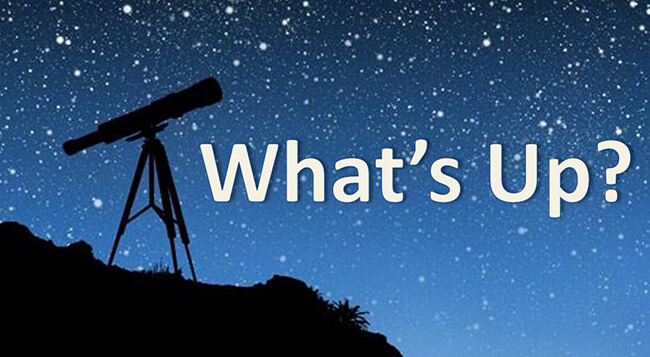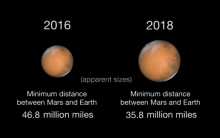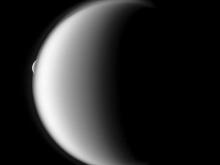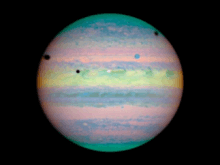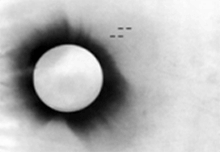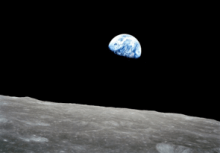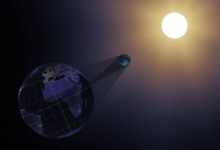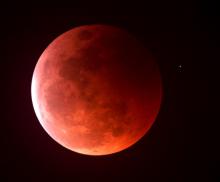What's Up
“What’s Up?” articles are short stories about the cosmos appropriate in length for school and community newsletters. Browse the list of articles below and see if one can find a home in your local newsletter! In the articles presented here, you will find stories about eclipses on Earth, eclipses on other worlds, and interesting facts about the sun, the moon, and other star systems.
What’s Up? What’s Next?
With all the excitement, planning, and anticipation surrounding the August 21st Total Solar Eclipse, it might be difficult to look forward to celestial events beyond August but there are some great ones to note.
Read MoreWhat’s Up? Eclipses, Transits, and Occultations
Solar eclipses are exciting events. The idea that the moon can move in front of the sun and block its life giving light, causing darkness to fall is both compelling and maybe a little scary.
Read MoreWHAT’S UP Many Moons
With the August 21st eclipse looming, I have started to wonder about solar eclipses on other planets. Is Earth unique among planets in our solar system? What might we see if we could stand on other worlds?
Read MoreWHAT’S UP? A Relative Eclipse
Around the turn of the century (1900 that is), physics got weird. In fact, our whole understanding of the universe got weird.
Read MoreWHAT’S UP? Lunar Libration
Does the moon rotate on its axis? Many people would say no, because it keeps only one face (or hemisphere) pointed at Earth at all times. But, in fact, in order to do this, it must rotate once for every orbit around the Earth it makes. You can demonstrate this with a friend. Try walking around your friend and not changing the direction of your face.
Read MoreWHAT’S UP? The Very Last Solar Eclipse!
The earliest records we have that anyone paid attention to solar eclipses are from Irish Neolithic astronomers who recorded in stone, the eclipse of November 30, 3340 BCE at what is now the Loughcrew Cairn L Megalithic Monument in Ireland. Solar eclipses must have been frightening events and we know from numerous writings that they were often viewed as bad omens.
Read MoreWhat’s Up? Magnetic Moons?
Magnetic fields are all around us. They are generated quite simply by the movement of charge….electricity! Every piece of electronics you work with generates a magnetic field. The Earth and Sun also generate their own magnetic fields as do the outer planets (Jupiter, Saturn, Uranus, and Neptune). Recent spacecraft observations of Jupiter’s largest moons suggest that most of them also have magnetic fields, some that they generate on their own and some that need a little help.
Read MoreWhat Color is the Sun?
Seems like a silly question; “What color is the sun?”. Everyone knows the sun is yellow, right? It’s right there in the sky; you just have to look to know this (OK, don’t really look at the sun…). Well…not so fast. It turns out that there are many absolutely correct and absolutely different answers to this seemingly simple question.
Read MoreWhat’s Up? Transits, Occultations, Conjunctions, and Eclipses
Chance line of site encounters in the heavens have historically been of great interest to civilizations dating back thousands of years. Solar and lunar eclipses have been viewed with great anticipation and fear. Close associations or “conjunctions” between planets or between a planet and the moon acquired magical properties from mystical practices such as astrology.
Read MoreWhat’s Up? Luna Obscura
I have yet to see my first total solar eclipse. My last attempt in August 1999 included rain and umbrellas at an old Abby just north of Paris, France. But, I'm making my plans for the next total solar eclipse across America on August 21, 2017! The problem with solar eclipses is that the path of totality is so narrow, less than 200 miles wide, so one frequently has to travel great distances to view totality (partial solar eclipses, just don't cut it). Plus, totality only lasts for a few minutes
Read More